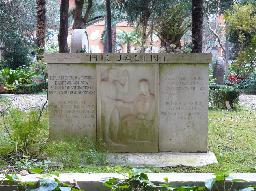Curtius, Ludwig |
| ARCHAEOLOGIST (GERMANY) |
|
BORN 13 Dec 1874, Augsburg, Bayern - DIED 10 Apr 1954, Roma, Lazio GRAVE LOCATION Roma, Lazio: Campo Santo Teutonico, Via di Porta Cavalleggeri |
|
Ludwig Curtius studied archaeology under Adolf Furtwängler in Munich. In 1899 he became tutor to Furtwängler's son Wilhelm, who would become famous as a conductor. From 1904 to 1907 he worked on excavations in Aegina and Hatussa. After his return to Germany he was appointed associate professor at the University of Erlangen. In 1913 he became professor ordinarius in that city. During the First World War he served as a news officer. After the war he taught at the University of Freiburg and from 1920 at the University of Heidelberg. In 1928 he became the director of the Deutsches Archäologisches Institut in Rome. In 1938 he was dismissed from this position by the nazis. He stayed in Rome where he died in 1954. Works: "Die antike Kunst" (two volumes, 1923-1938); "Die Wandmalerei Pompejis" (1929); "Das Antike Rom" (1944). Related persons • was teacher of Furtwängler, Wilhelm |
| Images |
Sources • Aubert, Joachim, Handbuch der Grabstätten berühmten Deutscher, Österreicher und Schweizer, Deutscher Kunstverlag, München, 1973 • Ludwig Curtius - Wikipedia (EN) |




